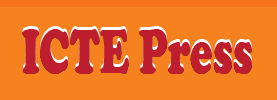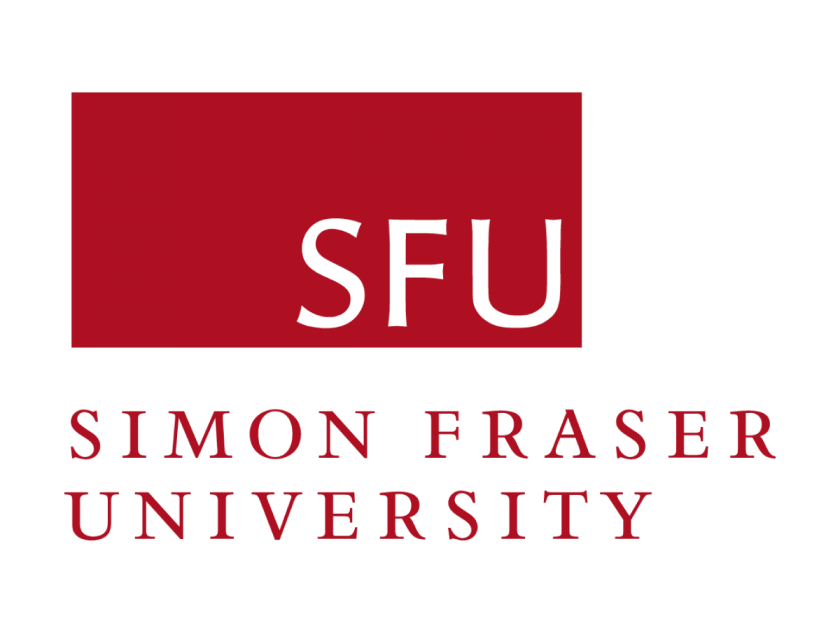Students' Challenges on Learning EMI Courses at a Technical University in Vietnam: An Investigation from Students' Voices
DOI:
https://doi.org/10.54855/paic.2319Keywords:
English as a Medium of Instruction, EMI implementation, tertiary curriculum, challenges, students’ perspectiveAbstract
In the age of technology development and internationalization, EMI (English as a Medium of Instruction) has been seen as a better method for resolving language problems of non-English students than teaching English in a single subject so as to meet the demand for employability in their future profession. However, EMI implementation is still a concern for educational researchers and instructors in many countries, especially in Asian Pacific regions. This research aimed to investigate EFL students' perspectives and challenges in learning an EMI program at a public technical university in Vietnam. To determine the obstacles of EMI learning from students' viewpoint, data were collected qualitatively by in-depth interviews with 18 EMI students in nine different academic disciplines randomly. The findings shed light on EMI implementation for tertiary education, as their perspectives on EMI courses' benefits are quite positive. However, this study also figured out several challenges due to students' poor ability in English interaction, vocabulary shortage, irrelevant course content, EMI lecturers' pedagogical methods, and students' motivations for the EMI course. This study provided some recommendations to help those interested in EMI in higher education enhance and develop EMI courses.
References
Airey, J., & Linder, C. (2006). Language and the experience of learning university Physics in Sweden. European Journal of Physics, 27(3), 553-560.
Al-Bakri, S. (2013). Problematizing English medium instruction in Oman. International journal of bilingual and multilingual teachers of English, 207(1172), 1-15.
Ammon, U., & Mc Connell, G. (2002). English as an academic language in Europe. A survey of its use in teaching (Duisburg papers on research in language and culture), (Peter Lang), Frankurt am Main. In Duisburg Papers on Research in Language and Culture, Peter Lang Frankurt am Main.
An, J., Macaro, E., & Childs, A. (2021). Classroom interaction in EMI high schools: Do teachers who are native speakers of English make a difference? System, 98, 102482.
Bielenberg, B. (2004). Identifying linguistic challenges for English language learners in mathematics and IT classrooms. In Proceedings of the 9thTESOL Arabia Conference: English language teaching in the IT age ,109-118.
Byun, K., Chu, H., Kim, M., Park, I., Kim, S., & Jung, J. (2011). English-medium-teaching in Korean Higher education: Policy debates and reality. Higher Education, 62(1), 341 - 449.
Chang, Y. Y. (2010). English-medium instruction for subject courses in tertiary Education: Reactions from Taiwanese undergraduate students. Taiwan International ESP Journal,2(1), 53-82.
Coleman, J.A. (2006). English-medium teaching in European higher education. Language Teaching, 39 (1), 1–14.
Collins, B. A. (2010). English medium higher Education: Dilemma and problems. Egitim Arastirmalari-Eurasian Journal of Educational Research, 39, 97-110.
Crystal, D. (2006). English worldwide. In R. Hogg & D. Denison (Eds.), A history of the English language (pp. 420-439). Cambridge: CUP
Dang, T. K. A., Nguyen, H. T. M. & Le, T. T. T. (2013). The impacts of globalization on EFL teacher education through English as a medium of instruction: An example from Vietnam. Current Issues in Language Planning, 14 (1), 52-72.
Dearden, J. (2015). English as a medium of instruction - a growing global phenomenon. London: British Council. Retrieved from https://www.britishcouncil.org/sites/default/files/e484_emi_cover_option_3_final_web.pdf.
Dieu, T. H. N. (2021). Learning motivation and challenges of Vietnamese students in English medium of instruction (EMI) at Japanese universities. Master thesis. Osaka Jogakuin University.
Doiz, A., Lasagabaster, D., & Sierra, J. (2011). Internationalisation, multilingualism and English medium instruction: The teachers' perspective. World Englishes, 30(3), 345-359.
Evans, S., & Morrison, B. (2011a). Meeting the challenges of English medium higher Education: The first-year experience in Hong Kong. English for Specific Purposes, 30(3), 198-208.
Evans, S., & Morrison, B. (2011). The student experience of English-medium higher Education in Hong Kong. Language and Education, 25(2), 147-162.
Fullan, M. (2007). Change theory as a force for school improvement (pp. 27-39). Springer Netherlands.
Furrer, C. J., Skinner, E. A., & Pitzer, J. R. (2014). The influence of teacher and peer relationships on students' classroom engagement and everyday motivational resilience. Teachers College Record, 116(13), 101-123.
Galloway, N., Numajiri, T., & Rees, N. (2020). The 'internationalisation', or 'Englishisation', of higher Education in East Asia. Higher Education, 80(3), 395-414.
Goodman, B. A. (2014). Implementing English as a medium of instruction in a Ukrainian university: Challenges, adjustments, and opportunities. International Journal of Pedagogies and learning, 9(2), 130-141.
Hamid, M. O., Nguyen, H. T. M., & Baldauf Jr. R. B. (2013). Medium of instruction in Asia: Context, processes and outcomes. Current Issues in Language Planning, 14(1), 1-15.
He, J. J., & Chiang, S. Y. (2016). Challenges to English-medium instruction (EMI) for international students in China: A learners' perspective: English-medium Education aims to accommodate international students into Chinese universities, but how well is it working? English Today, 32(4), 63–67.
Hellekjaer, G. (2010). Language matters: Assessing lecture comprehension in Norwegian English medium higher education. In C. Dalton-Puffer, T. Nikula & U. Smit (Eds.), Language use and language learning in CLIL classroom, 233-258. Amsterdam: John Benjamins.
Huang, F. (2006). Internationalization of university curricula in Japan: Major policies and practice since the 1980s. Journal of Studies in International Education, 10(2), 102-118.
Hung, D. M., & Lan, L. T. D. (2017). Content lecturers' challenges in EMI classroom. European Journal of English Language Teaching, 2(1), 1-21.
Johnson, R. K., & Swain, M. (Eds.). (1997). Immersion education: International perspectives. Cambridge University Press.
Keuk, C. N., & Tith, M. (2013). The enactment of English-Medium Instruction (EMI) undergraduate program in Cambodia: Students' Voices. International Journal of Innovation in English Language Teaching and Research, 2(2), 159.
Kirkpatrick, A. (2014). English as a medium of instruction in east and south-east Asian Universities. In N. Murray & A. Scarino (Eds.), Dynamic ecologies (pp. 15-23). New York, NY: Springer.
Klaassen, R. G., & Graaff, D. (2001). Facing innovation: Preparing lecturers for English medium instruction in a non-native context. European Journal of Engineering Education, 26(3), 281-289.
Lasagabaster, D., Sierra, J. M., & Doiz, A. (2014). Motivation and foreign language learning. Motivation and Foreign Language Learning, 1-198.
Lasagabaster, D., Doiz, A., & Pavón, V. (2018). Undergraduates' beliefs about the role of language and team teaching in EMI courses at university. Rassegna Italiana di Linguistica Applicata, 2(3), 111–127.
Le, N. T., & Nguyen, D. T. (2022). Student satisfaction with EMI courses: the role of motivation and engagement. Journal of Applied Research in Higher Education, (ahead-of-print).
Le, D. M. (2012). English as a medium of instruction in the tertiary education system in Vietnam. The Journal of Asia TEFL, 9(2), 97-122.
Le, T. T. N. (2016). Exploring students' experiences of English Medium Instruction in Vietnamese universities. Doctoral dissertation. The University of Newcastle.
Lee, Y. J., Davis, R. O., & Li, Y. (2021). International graduate students' experiences of English as a medium of instruction (EMI) courses in a Korean university. International Journal of Learning, Teaching and Educational Research, 20(9), 38-51. https://doi.org/10.26803/ijlter.20.9.3
Lin, T., & He, Y. (2019). Does bilingual instruction impact students' academic performance in content-based learning? Evidence from business school students attending bilingual and L1 courses Sustainability, 11(1), 263. https://doi.org/10.3390/su11010263
Macaro, E., Curle, S., Pun, J., An, J., & Dearden, J. (2018). A systematic review of English medium instruction in higher education. Language teaching, 51(1), 36-76.
Madhavan, D., & McDonald, J. (2014). Food for thought. Webinar English as Medium of Instruction (EMI): Philosophies and Policies, (June), 1–3. http://www.oecd.org/edu/imhe/FoodforthoughtEnglishasaMediumofInstructionWebinar.pdf
Manakul, W. (2007). English in engineering education for Japanese graduate students. Australasian Association of Engineering Education, 13(2), 53-63.
Manh, L. (2012). English as a medium of instruction in the tertiary education system in Vietnam. The journal of Asia TEFL, 9(2), 97-122.
Marsh, D., & Laitinen, J. (2005). Medium of instruction in European higher Education: Summary of research outcomes of European Network for language learning amongst undergraduates (ENLU) Task Group 4. Jyvaskyla: Uni COM, University of Jyvaskyla.
Miller, L. (2009). Engineering lectures in a second language: What factors facilitate students' listening comprehension? Asian EFL Journal, 11(2), 8-30.
MOET. (2008). Đề án đào tạo theo chương trình tiên tiến tại một số trường đại học của Việt Nam giai đoạn 2008-2015 (Project document for implementing Advanced programs in some Vietnamese universities in the period 2008-2015). http://vanban.moet.gov. vn/resources/eduportal/uploads/2009/tt910_1505-QD-TTg.pdf.
MOET. (2013). Education in Vietnam in the Early Years of the 21st Century. Hanoi, Vietnam: Vietnam Education Publishing House.
Murray, C., & Pianta, R. C. (2007). The importance of teacher-student relationships for adolescents with high incidence disabilities. Theory into practice, 46(2), 105-112.
Nguyen, H. T., Hamid, M. O., Moni, K. (2016). English-medium instruction and self-governance in higher education: the journey of a Vietnamese university through the institutional autonomy regime. Higher Education, 72, 669-683.
Nguyen, H. T., Walkinshaw, I., & Pham, H. H. (2017). EMI programs in a Vietnamese university: Language, pedagogy and policy issues. English medium instruction in higher Education in Asia-Pacific: From policy to pedagogy, 37-52.
Nguyen, T. N. T. (2022). A Review of Studies on EFL Teachers' and Students' Perceptions of Tranglanguaging as a Pedagogical Approach. International Journal of TESOL & Education, 2(3), 324-331.
Patrick, H., Ryan, A. M., & Kaplan, A. (2007). Early adolescents' perceptions of the classroom social environment, motivational beliefs, and engagement. Journal of educational psychology, 99(1), 83-93.
Pianta, R. C., Mashburn, A. J., Downer, J. T., Hamre, B. K., & Justice, L. (2008). Effects of web-mediated professional development resources on teacher–child interactions in pre-kindergarten classrooms. Early childhood research quarterly, 23(4), 431-451.
Pokay, P., & Blumenfeld, P. C. (1990). Predicting achievement early and late in the semester: The role of motivation and use of learning strategies. Journal of educational psychology, 82(1), 41-50.
Pun, J., & Jin, X. (2021). Student challenges and learning strategies at Hong Kong EMI universities. Plos one, 16(5), e0251564.
Pun, J., & Macaro, E. (2019). The effect of first and second language use on question types in English medium instruction science classrooms in Hong Kong. International Journal of Bilingual Education and Bilingualism, 22(1), 64–77.
Rose, H., Curle, S., Aizawa, I., & Thompson, G. (2020). What drives success in English medium taught courses? The interplay between language proficiency, academic skills, and motivation. Studies in Higher Education, 45(11), 2149-2161.
Sahan, K., Rose, H., & Macaro, E. (2021). Models of EMI pedagogies: At the interface of language use and interaction. System, 101, 102616.
Sercu, L. (2021). Students' perceptions of content-and language-integrated learning in Vietnam: A survey Study. International Journal of Learning, Teaching and Educational Research, 20(12).1-18.
Stoynoff, S. (1997). Factors associated with international students' academic achievement. Journal of instructional psychology, 24(1), 56-68.
Taguchi, N., & Naganuma, N. (2006). Transition from learning English to learning in English: Students' perceived adjustment difficulties in an English medium university in Japan. Asian EFL Journal, 8(4), 52-73.
Tamtam, A. G., Gallagher, F., Olabi, A. G., & Naher, S. (2012). A comparative study of the implementation of EMI in Europe, Asia and Africa. Procedia-Social and Behavioral Sciences, 47, 1417-1425.
Tange, H. (2010). Caught in the Tower of Babel: university lecturers' experiences with internationalisation. Language and Intercultural Communication, 10(2), 137-149.
Tatzl, D. (2011). English medium masters' programs at an Austrian university of applied sciences: Attitudes, experiences and challenges. Journal of English for Academic Purposes, 10(4), 252–270.
Thompson, G., & McKinley, J. (2018). Integration of content and language learning. The TESOL encyclopedia of English language teaching. 1-13.
Tong, F., & Shi, Q. (2012). Chinese–English bilingual Education in China: A case study of college science majors. International Journal of Bilingual Education and Bilingualism, 15(2), 165-182.
Tran, T. H. T., Burke, R., & O'Toole, J. M. (2021). Perceived impact of EMI on students' language proficiency in Vietnamese tertiary EFL contexts. IAFOR Journal of Education, 9(3), 7-24.
Vinke, A. A., Snippe, J., & Jochems, W. (1998). English medium content courses in non-English higher Education: A study of lecturer experiences and teaching behaviors. Teaching in Higher Education, 3(3), 383-394.
Vu, N. T., & Burns, A. (2014). English as a medium of instruction: Challenges for Vietnamese tertiary lecturers. Journal of Asia TEFL, 11(3). 1–31. http://www.asiatefl.org/main/download_pdf.php?i=59&c=1412065511&fn=11_3_01.pdf.
Wannagat, U. (2007). Learning through L2–content and language integrated learning (CLIL) and English as medium of instruction (EMI). International Journal of Bilingual Education and Bilingualism, 10(5), 663-682.
Wright, W. E. (2004). What English-only really means: A study of the implementation of California language policy with Cambodian-American students. International Journal of Bilingual Education and Bilingualism, 7(1), 1-23.
Phuong, Y. H., & Nguyen, T. T. (2019). Students' perceptions towards the benefits and drawbacks of EMI classes. English Language Teaching, 12(5), 88-100.
Yuan, R. (2021). Taking up EMI in higher Education: The complexities of teacher emotions. Journal of Language, Identity & Education, 1-9.
Downloads
Published
How to Cite
Issue
Section
License
Copyright (c) 2022 Hoang Ngoc Tue, Bui Thi Ngan, Le Duc Hanh, Pham Van Duc

This work is licensed under a Creative Commons Attribution 4.0 International License.
Copyright
The copyright of all articles published in the Proceedings of the AsiaCALL International Conference (paic) remains with the Authors, i.e. Authors retain full ownership of their article. Permitted third-party reuse of the open access articles is defined by the applicable Creative Commons (CC) end-user license which is accepted by the Authors upon submission of their paper. All articles in the aicp are published under the CC BY-NC 4.0 license, meaning that end users can freely share an article (i.e. copy and redistribute the material in any medium or format) and adapt it (i.e. remix, transform and build upon the material) on the condition that proper attribution is given (i.e. appropriate credit, a link to the applicable license and an indication if any changes were made; all in such a way that does not suggest that the licensor endorses the user or the use) and the material is only used for non-commercial purposes.









